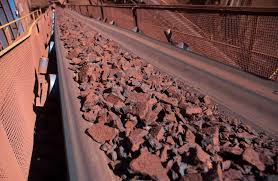In the global iron ore market right now it’s a tale of two very different exporters. While mining majors in Australia are going flat out and the country may be shipping record volumes, rival Brazil has seen stunted flows with the coronavirus pandemic restraining operations.
The contrasting fortunes of the pair — which between them account more than 80% of global shipments — come as demand in China has picked up, helping spot prices to top $100 a ton. Goldman Sachs Group Inc. estimates the strength in Chinese steel output coupled with the underperformance in Brazil supply will extend a deficit through this month and into July, before a surplus emerges.
Exports from Australia totaled 79.7 million tons in May, according to an initial tally from Global Ports compiled by Bloomberg. That’s up from 76.5 million tons a year earlier, and would be the highest on record, according to official figures that run until March this year. The country is home to mining giants BHP Group, Rio Tinto Group and Fortescue Metals Group Ltd.
It’s a quite different story in Brazil, where flows are dominated by Vale SA. Year-to-date volumes are about 13% lower than 2019, according to government data. In the latest snapshot, exports were just 21.5 million tons in May compared with 29.9 million tons in the same month last year.
While Covid-19 “appears to have had little impact on Australian miners,” Brazilian volumes are “still some way off,” although they’ve picked up in the past two weeks, according to Macquarie Wealth Management, which tracks cargoes berth-by-berth. For Vale to hit guidance, it’ll need to ship more than 6 million tons a week for the remainder of the year, a rate it’s not managed so far in 2020, Macquarie said in the June 2 report.
Iron ore futures traded 0.2% lower at $97.94 a ton on the Singapore Exchange at 11:38 a.m., following a four-day advance that’s taken most-active prices to as much as $99.87. Spot benchmark prices held above $100 a ton for third day on Tuesday, according to Mysteel Global.
Global shipments are expected to recover in the second half, creating a seaborne surplus and pressuring prices, according to Goldman, which predicted exports from Brazil would rise from 83 million tons in the second quarter to more than 100 million tons in each of the subsequent quarters.
“We now see 2020 playing out like 2019 — a big first-half deficit followed by a second-half surplus,” Goldman analysts including Paul Young said in a report received Wednesday. The bank sees prices at $90 this quarter, $85 in the third quarter, and $80 in the final three months.
(Source Bloomberg)
